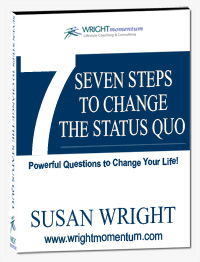Building models
Posted on 03. Nov, 2011 by Susan Wright in Life Coaching
Many of us in our early stages of development sat on the floor playing with blocks & stacking rings. Over time the towers grew taller and more sophisticated; and yet, there was great pleasure in knocking them down and starting all over again. This action tells us something about our capacity for creativity, development, and change. As a child you engaged in this capacity quite naturally, with no strong attachment to the outcome – unless of course a sibling came along and knocked it down before you could!
 As adults, we still design or build models to describe or better understand our experience; often in the form of mental models. Quite honestly we can get stuck in these, our ego says, “it took years to create this, how dare you come along and dismantle everything I know!” The great undoing may be treacherous; and yet, powerful and freeing; not unlike building blocks tumbling and crashing to the floor.
As adults, we still design or build models to describe or better understand our experience; often in the form of mental models. Quite honestly we can get stuck in these, our ego says, “it took years to create this, how dare you come along and dismantle everything I know!” The great undoing may be treacherous; and yet, powerful and freeing; not unlike building blocks tumbling and crashing to the floor.
I often watch and listen to my young boys playing with their action figures and cars, creating narratives and imaginary scenarios which ultimately result in a bust, boom, and bang! The entire cycle is played out again and again possibly with new instruments and scripts. In these moments of play they are fully engrossed with deaf ears to Mom! All well and good as they are creating, developing, and appreciating an impermanence with all that is.
As an adult I love building models, those I use to explain my coaching process and my work ( I still love to build towers as well!) There is something so satisfying (for me) by designing and constructing a concrete representation of ideas and processes. They take form and structure yet still malleable to be infused with new insights and variables. While coaching and facilitating teams or groups of people, it’s quite clear to me that although I have a structure or process, the parts within it are moving or adapting to the context in which we are present. I’m also aware and rather intentional about the co-creative and collaborative experience underway.
It’s even more fascinating when I start to notice other models coming into play. Will one supersede and crash the other? Will one aspect of a model; a moving part let’s say, alter and change the flow? Will another model be created? Will it transform and bring about new possibilities? Whether models are used to describe our process or experience, one must be prepared to let go and allow room for other structures to take it’s place; for when we hold on, we stop co-creating and growing. Sure a little repetition is okay, that’s a big part of learning but when the model or process becomes too fixed or inflexible – then we get caught up in being right! Right?
For today, consider what you are building: a relationship, a project, an appreciation for something or someone, a business plan, a team, a strategic plan…it doesn’t matter so much as to what it is, but rather your approach and attitude. What are you willing to keep, tweak, demolish, or add? What will be transformed? Who might just come along and crash your model and if someone does can you say, “Thank you” and start anew?




